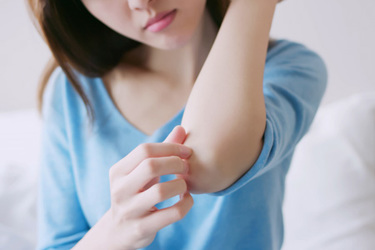Generating A Novel Measure Of Scratch Using Wrist-Worn Wearables
By Mari Griffioen, Senior Clinical Scientist

Researchers now have an objective, passive measure to assess itchy conditions and the benefit of potential treatments. We know the feeling of itch, often followed by scratch behavior, negatively affects the quality of life of millions of people living with a wide range of clinical conditions. Moreover, the action of scratching is a key component of several disease symptomologies. Scratch and itch are interdependent symptoms. Itch can, and often does, provoke the desire to scratch, but scratching can also be an unprovoked action. Scratching then leads to further problems such as inflammation and lesions that, in turn, can cause itch.1 Many people are caught in a vicious itch-scratch cycle.
Traditionally, such clinical conditions can only be assessed using physician assessments of lesions (often the result of the scratching) and patients’ own subjective views. This can be problematic as physician assessments only provide a periodic snapshot and patient-reported outcomes (PROs) can be considered burdensome and prone to recall bias.1 An objective, passive measure of scratching could help to reveal one of the outcomes that matters most to people and demonstrate the impact of therapeutic treatments to intervene.
Get unlimited access to:
Enter your credentials below to log in. Not yet a member of Clinical Leader? Subscribe today.
